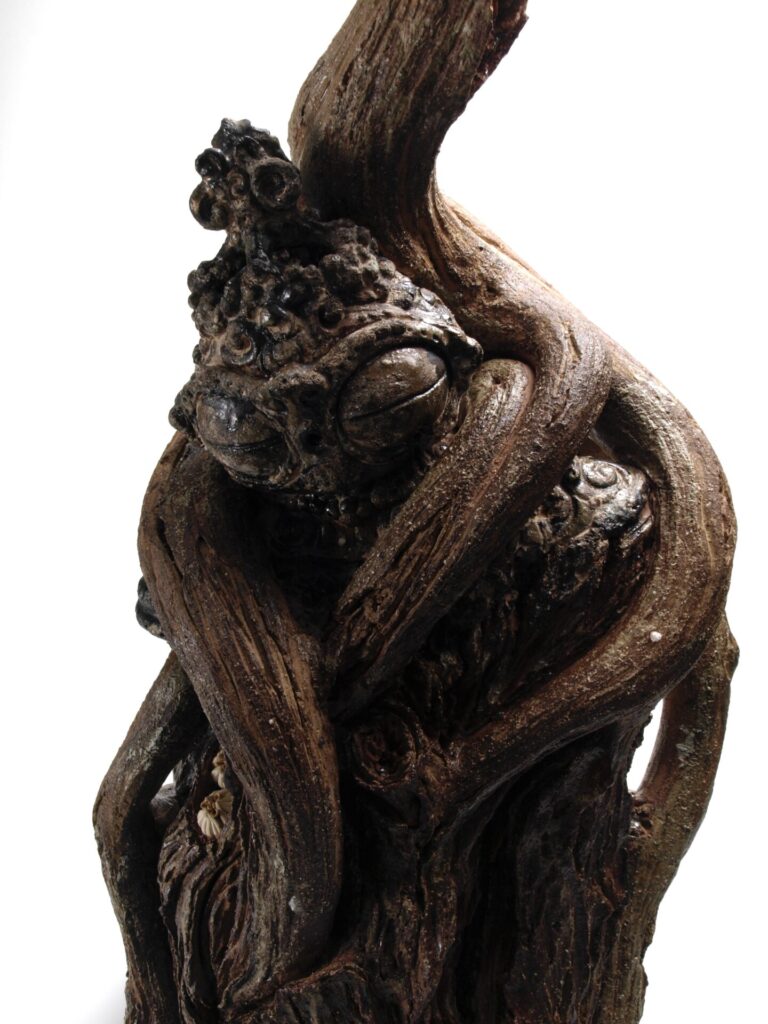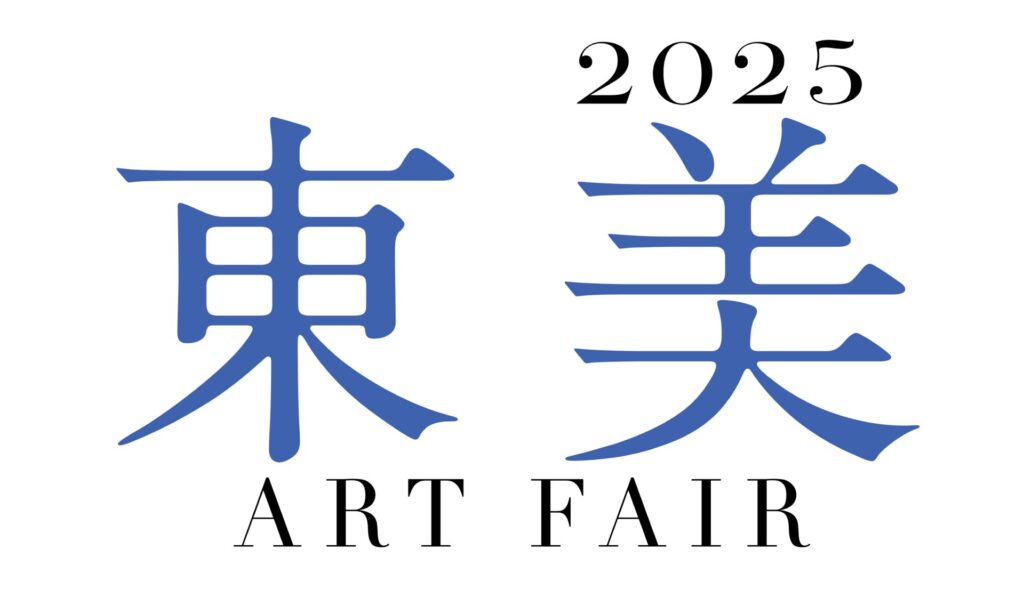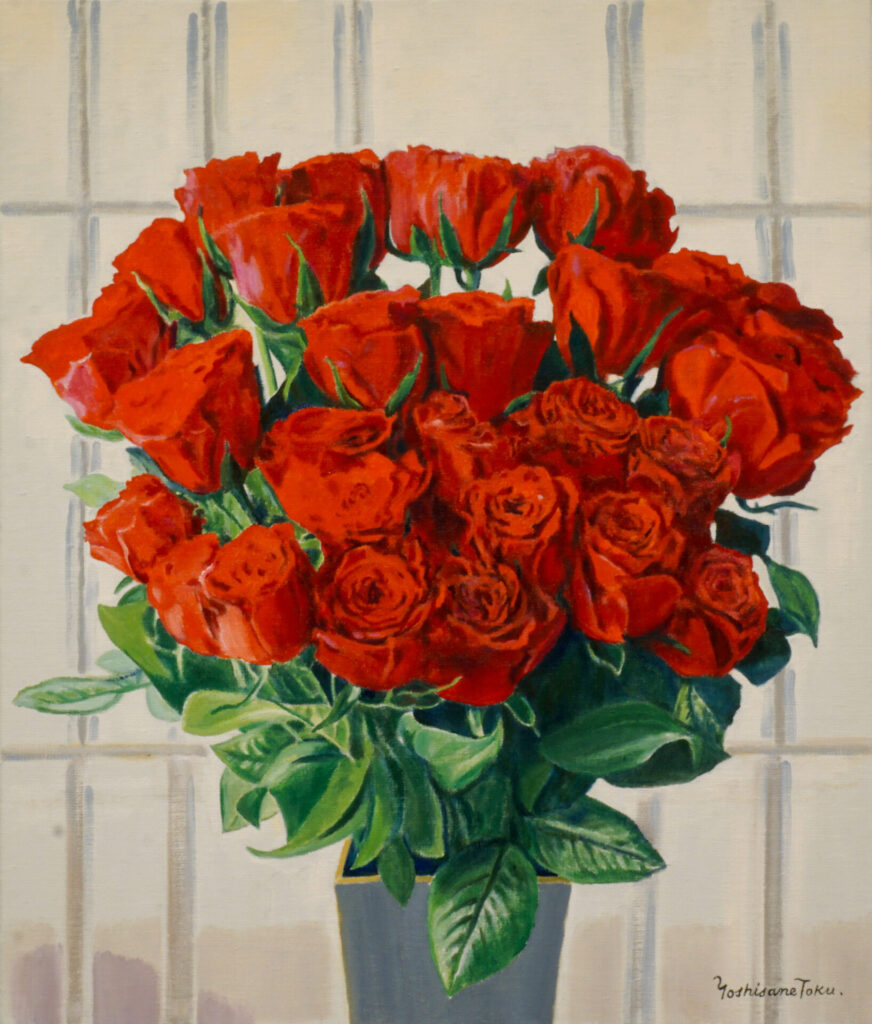
ラグーザ玉 Tama RAGUSA
山田啓貴 Keiki YAMADA
山本雄教 Yukyo YAMAMOTO “Golden life”
アートフェア東京2019 至峰堂画廊では、ラグーザ玉、山田啓貴、山本雄教の三作家に焦点を当て、変わりゆく時代における作家と作品の存在をテーマに展示致します。
日本が近世に終わりをつげ、近代国家への道を歩みだした約150年前の激動の時代を生きたラグーザ玉。精通したルネッサンス期の古典技法で思い入れのある身辺の物を描き、その対象物との対話を通して鑑賞者自身を構成する過去や現在についての思いを呼び起こさせ、同時に描かれた物やそうした記憶を数百年後の未来に遺そうとする山田啓貴。ポケットの中の1円硬貨やお米、ブルーシートなど身近なものから、鑑賞者と同時代の世界との関連を目の覚めるような方法で結び付けて見せる山本雄教。
これらの作家の作品を通じ、激しく変わりゆく時代を乗り越えようと残す作家の思い、そこから滲出する作家の人間味を味わって頂ければ幸いです。
In Art Fair Tokyo 2019, SHIHODO GALLERY would like to introduce three artists, Tama Ragusa, Keiki Yamada, and Yukyo Yamamoto. We would like guid you through the change in the artists and their works the time changes.
Tama Ragusa is an artist who lived in the shifting time when Japan started moving toward modernization about 150 years ago. Keiki Yamada paints things around him using classical Renaissance style and brings back viewers’ memories and past experience through his works. At the same time, he aims to pass on those memories and objects he paints to later generations. Yukyo Yamamoto seeks to show connections between viewers and the modern world using things around him like one yen coins in his pockets, rice, blue sheets, and so on.
I hope you enjoy the taste of each of these artists and see how their personalities are reflected on their works.
ラグーザ玉 Tama RAGUSA(1861-1939)
 ラグーザ玉「初秋の渓流」60.6×72.7cm 油彩
ラグーザ玉「初秋の渓流」60.6×72.7cm 油彩
Tama RAGUSA “Creek in early autumn” 60.6×72.7cm oil on canvas
日本が近代化に向かって突き進む直前の1861年、江戸の著名な寺院である増上寺の管理人である清原家の次女として生まれる。11歳のころから日本画家に学んでいた清原玉は、15歳の時、明治維新後まもなく新政府が設立した工部美術学校に彫刻教師として招聘されたイタリア人・ヴィンチェンツォ・ラグーザの指導を受ける。その後、ラグーザに見初められた玉は、1882年、ラグーザの帰国に伴い、イタリアに渡る。当地にて油彩画の研鑽を積んだ玉は、1889年ラグーザとパレルモ市内のカトリック寺院にて結婚。以降、エレオノーラ・ラグーザと名乗る。
日本語を殆ど忘れるほど現地で生活をつづけた玉は、ベネチアで多数の賞を受賞するなど活躍を続け、パレルモの美術工芸学校の副校長となった。夫の死後もイタリアにて生活を続けていたが、1931年、イタリア旅行中の日本人ジャーナリスト・木村毅が玉の存在を知り、帰国後 新聞に取り上げたことをきっかけに玉の名が日本中に知られることとなる。
1933年 日本に帰国し、各地で展覧会が催された。1939年没。ごく初期にイタリアで活躍をした日本人女流画家の存在は現代においても伝説的となっており、その穏やかな作風は作家のしなやかで強い人間性を感じさせ、特に女性の収集家が多いことで知られます。
今回の展示では、水辺の風景を描いた作品や花などの帰国後の作品を中心に展示をし、明治以前の教育が垣間見られるような穏やかで品格のある作風から、激動の時代を数奇な運命の下に生き抜いた作家の人間性について考えます。
In 1861, right before the time Japan started moving toward its modernization, she was born as the second daughter of Kiyohara family who was manager of the famous Zojo-ji temple in Edo period. Tama was learning art from Japanese artist since she was 11. When she was 15, she studied under Vincenzo Ragusa, an Italian sculpture professor who came to Japan as a foreign advisor in Tokyo Institute of Technology, the school founded by Meiji government. In 1882, she went to Italy with him upon his return to his home country, Italy. She gained a lot of experience in oil painting there. She married him in Catholic church in Palermo in 1889 and adopted the name Eleonora Ragusa.
It is said that she lived in Italy for such a long time that she almost forgot her first language Japanese. She continued to be active in arts and received numerous awards that she became a vice-principal of the art school in Palermo. She remained in Italy even after her husband’s death. However, in 1931, a Japanese journalist Takeshi Kimura found out about Tama while he was traveling in Italy. He covered her story in a newspaper after he went back to Japan and brought fame to her back in her home country.
In 1933, she returned to Japan. Her exhibitions were held in different parts of the country. She passed away in 1939. The great work of this Japanese female artist is still legendary to this day. Her gentle style in her works shows her flexible and tough personality and many of female collectors like her paintings.
In this exhibition, we introduce mainly her water-themed and flower paintings from the time after her return in Japan. These paintings show you the reflection of education in Meiji period.
 ラグーザ玉「芍薬」8F 油彩
ラグーザ玉「芍薬」8F 油彩
Tama RAGUSA “Chinese peonies” 8F oil on canvas
山田 啓貴 Keiki YAMADA
Official site
 山田啓貴「山に祈る」97×120cm 油彩・テンペラ
山田啓貴「山に祈る」97×120cm 油彩・テンペラ
Keiki Yamada “Pray for mountain” 97x120cm Tempera, oil on panel
中世以降、美術作品として残ってきた油彩とテンペラ技法の徹底した追求を基盤とし、それを用いて現代に生きる作家が親しく接してきたものを描いています。
アーティスト、描かれたものの存在、鑑賞者という関係性が大きく変化したとされる現代においても、そのクオリティーの高さゆえに、独特の対話的空間と日常気づくことのできない対象物の存在や自分自身の記憶といったテーマの重要性を作品を通じて訴えかけています。
古来からの美術品の意義と愉しみを正当に提供し続ける山田作品は、現代におけるアートの定義のゆらぎに対する真正面からの問いであると言えるでしょう。
今回の展示では、作家が常に取り組んできた、盛り塩をメインに展示致します。作家の重要なテーマである食品の中でも最も身近で普遍的な塩。その塩を、美術においても最も大切とされる円錐形に盛ることは、清めや祈りを意味します。作家は、紛争、災害などが起こる度に祈りを込めて盛り塩を描いてきました。
しかしながら作家は、この盛られた塩一粒一粒を描くことを通じ、あたかもその盛り塩が作家として自身が登るべき目標としての山であるようにも感じるといいます。
故郷・北海道へ制作の拠点を移し、さらにじっくりと対象に向き合い始めた作家のさらなる深化を感じて頂ければ幸いです。
He seeks to master oil paintings and tempera technique that have been around since Medieval time. Using these techniques, he paints things that he has been closely interacted.
In this modern society, relation of artists, theme of art works, and viewers has greatly changed. He puts a focus on painting objects that have to do with his own past memories and experience.
Works of Yamada bring you meaning and joy of art that come from even old time. They are questioning the definition of art in modern society.
In this exhibition, we introduce works that themed salt piles. Salt, the food that is most closely attached to our lives and the most universal in any kind of food, is the most essential theme of his works. Salt piled in a cone shape means purification and praying. He has been painting salt piles every time conflicts and natural disasters occurred. However, painting each grain of salt, he says that he feels as if the pile of salt is a mountain that he has to climb just like he achieves his goal.
山本 雄教 Yukyo YAMAMOTO
Official site
 山本雄教「One coin people」162×92cm 1円硬貨、麻紙、鉛筆によるフロッタージュ
山本雄教「One coin people」162×92cm 1円硬貨、麻紙、鉛筆によるフロッタージュ
Yukyo Yamamoto “One coin people ” 162x92cm Hemp Paper frottage on 1 yen coins
今回は全体のテーマを「Golden life」と題し、Goldenの名の通り、いずれも通貨や金、金箔をモチーフや素材とした4つのシリーズによって構成します。
The theme of his works in this exhibition is “Golden life”. As the word “Golden” says, it is composed of 4 series of works using currency, gold, and gold leaves.
■群像、経営者 Crowd portrait, business managers
一円硬貨のフロッタージュにより人々の群像を描いた「One coin people」。この作品は、小さな一円硬貨ひとつひとつを人間一人一人の存在に見立てると共に、社会生活を送る上でお金から逃れることはできないという皮肉を含んだ作品です。描かれた彼らは顔の見えないおぼろげな存在であり、その解像度は存在の不確かさを表しています。
そして相対するように並ぶのは、著名な経営者の肖像です。莫大な金額とともに語られる彼らの存在は、ゴールデンライフという言葉そのもののようです。しかしその金額の大きさゆえ、彼らのパーソナリティは省みられることはなく、常にその金額によって語られることがほとんどです。これは形は違えど、同じようにお金から逃れられないともいえるかもしれません。というより、彼らを見る私たちの目が、そこから逃れられないのでしょう。一方彼らはお金に捉われるのではなく、その中を笑顔で自由に遊ぶような存在かもしれません。しかしながら今作において彼らの笑顔が認識できるのは、より多くのコインを用いて描いているからなのですが。
“One coin people” is a work that depicts a group of people using one yen coin frottage. This work shows each little one yen coin as human while it has an ironic meaning that people cannot live without money in this society. Their face looks vague and the resolution of the work represents uncertainty of their existence.
The works displayed next to it are portraits of famous business managers. They are usually known for having enormous amount of money which is literally golden life. However, because of the big amount of money they own, their actual personalities are forgotten and money they own is the only aspect people see. This implies that, whatever form it is, we cannot get away from obsession with money. Or perhaps that is the only way we can see these wealthy people. On the other hand, the wealthy people are not bounded by money, but they rather freely enjoy being in such a wealthy world. Ironically, the reason we can see them smiling in Yamamoto’s works is that he used even more coins to make them.
■通貨 Currency
紙幣、そして暗号通貨を同じく一円硬貨のフロッタージュで描いたシリーズです。通貨のレートは毎日変動し続けていますが、その変化はどこか別世界の出来事のようで、友達の遊んでいるゲームの画面を眺めているかのようです。しかしその変化は、私たちの暮らしに如実に影響を与えます。
ドル紙幣をはじめとする海外の紙幣を描くシリーズは、「1ドル=〇〇○円(実際に使用した硬貨の枚数)」という風に、タイトルを通貨のレートを思わせるものにしています。
そのため、作品のサイズが大きくなると一円硬貨も多くなり円安に、小さくなると円高になるという、通貨の影響関係をビジュアルをもって表すような作品になっています。
また、紙幣が無数に散らばる光景を描いた作品では、通貨の存在が根本的に抱える虚構性が強調されることになります。
また、ビットコインをはじめとする暗号通貨に対する懐疑的な目線は、そもそも通貨という存在そのものの不思議さを改めて感じさせられます。価値の信用性の担保が異なるだけで、物質的な価値を持たない紙幣と、モノとしては存さない暗号通貨は、人間の想像力によって成り立っている存在であることに変わりはないのです。
It is a series of works that depicts bills and cryptocurrency using one yen coin frottage. While exchange rates keep changing every single day, it makes us feel as if it is happening in another world just like videogame you play with your friends. However, the change certainly influences our everyday lives.His series of works called foreign bills series, using such as dollar bills, tell you exchange rates in an interesting way by naming each work “1 dollar=OOO yen (number of coins he actually used)” Therefore, bigger the size of work it gets, the more coins he needs. Similarly, the smaller the size of work it gets, the fewer coins he needs. It shows how exchange rates actually happen. Also, in his works that depict scattered bills, he emphasizes how currency might be actually unreal.
Moreover, his skeptical view on cryptocurrency like bitcoins makes us wonder what currency is after all. It tells you that bills and cryptocurrency could be made up with our imagination after all.
■ドル紙幣と金箔 Dollar bills and gold leaves
ドル紙幣に金箔により対象を描くシリーズです。元々紙幣は、金をはじめとする金属の代替品として現れたものです。今作ではそんな紙幣の上に「金」箔を用いることで、入れ子状の構造を生んでいます。そしてそこに描かれるのは、ビットコインなどの物質的には存在しないが価値を持つイメージたちです。
It is a series that depicts objects on dollar bills using gold leaves. Originally bills appeared as substitutions of gold and other gold items. By using gold leaves on the bills, it has a form of nesting structure. Images depicted on them are coins and other items that don’t physically exist but have values.
■金の延べ棒 Gold ingot
金の延べ棒をモチーフとした立体作品です。延べ棒のような物体は、裏から見ると段ボールで出来たカプセルホテルのような寝床です。
金がなければ、人は眠ることもできません。
These are made based on gold ingots. They look like cardboard-made capsule hotels if you look at them from the back.People cannot even sleep without money.
至峰堂画廊 ブースNo.G130
●プライベートビュー ※招待者のみ
3月7日(木)14:00 – 16:00
●ベルニサージュ ※招待者のみ
3月7日(木)16:00 – 20:00
●パブリックビュー
3月8日(金)・9日(土) 11:00 – 20:00
3月10日(日) 11:00 – 17:00
入場料:1DAYパスポート 前売券 4,000円/当日券 5,000円(税込)
会場:東京国際フォーラム ホールE & ロビーギャラリー
東京都千代田区丸の内3-5-1
●Private View ※invitation-only
7th March (Thu) 14:00 – 16:00
●Vernissage ※invitation-only
7th March (Thu) 16:00 – 20:00
●Public View
8th March (Fri), 9th March (Sat) 11:00 – 20:00
10th March (Sun) 11:00 – 17:00
Tickets: 1DAY Passport Advance 4,000 JPY / Same-day 5,000 JPY
(Including tax)
Venue: Tokyo International Forum Hall E and Lobby Gallery
3 Chome-5-1 Marunouchi Chiyoda-ku,Tokyo-to 100-0005 Japan






